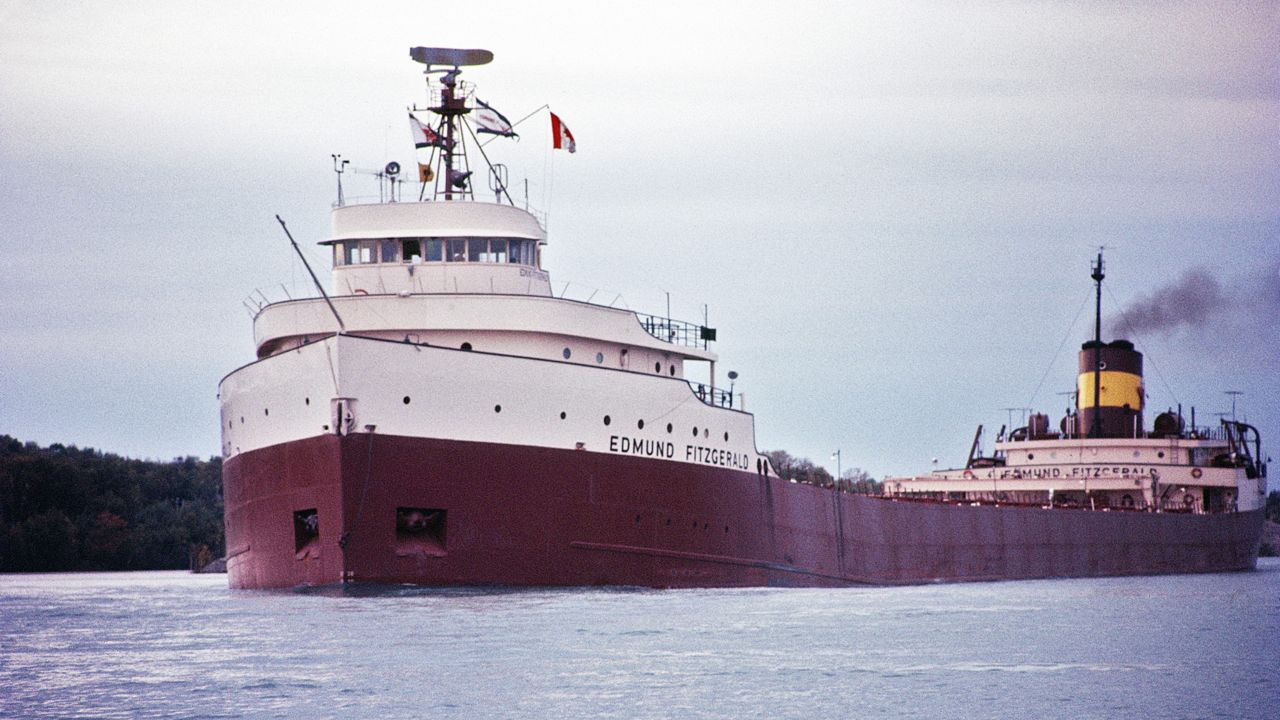The Edmund Fitzgerald remains the most famous shipwreck to have ever occurred on Lake Superior, and the weather may have been a major factor in the ship's demise.
On Nov. 9, 1975, the SS Edmund Fitzgerald set sail from Superior, Wis. on a course to Detroit, Mich.
During the evening hours of Nov. 10, the ship sank in southeastern Lake Superior near Whitefish Point, Mich. All 29 members of the crew died. Although an official cause of the shipwreck has not been determined, the weather is at least believed to have been a contributing factor.
On Nov. 9 and 10, 1975, a strong storm developed over Kansas and tracked northeast over the Great Lakes region.
While not an unusual storm setup for November, it was intense enough to prompt the National Weather Service to issue Gale Warnings for all of Lake Superior for northeast winds of 35-50 knots and wave heights of 8 to 15 feet.
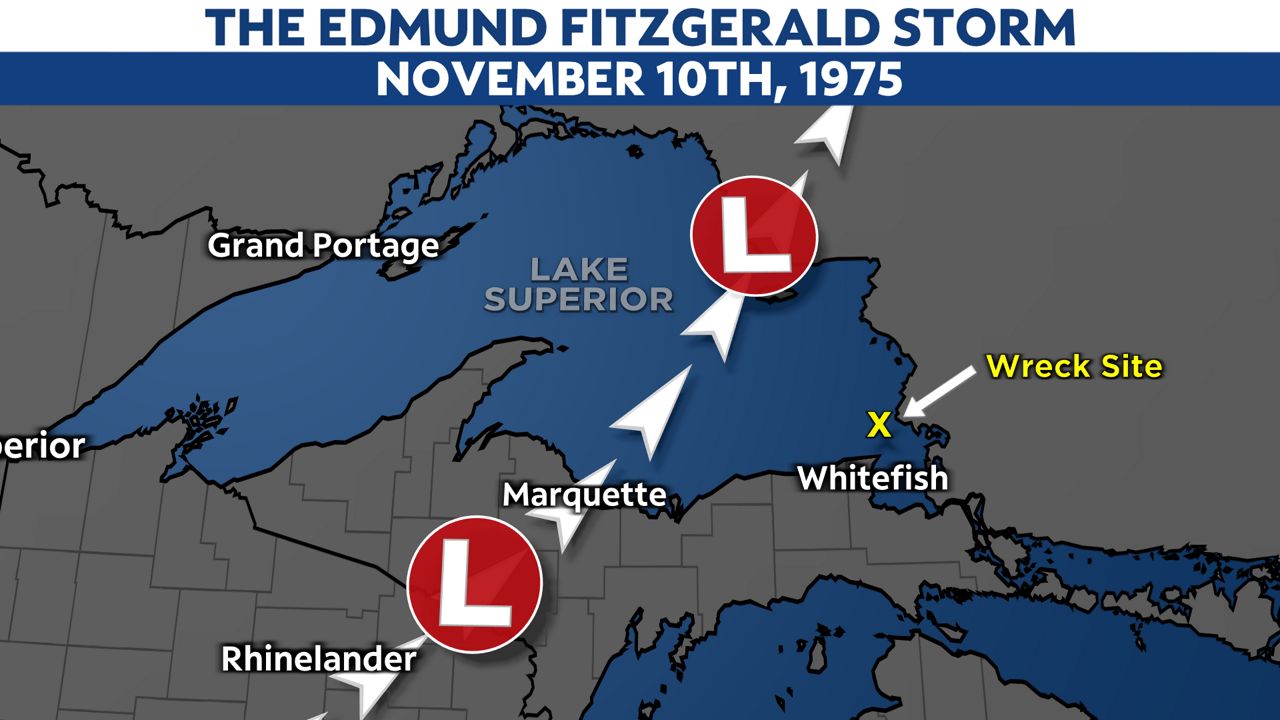
The center of the storm passed over central Wisconsin and then passed over Marquette, Mich. by the early morning hours of Nov. 10. As the low pressure system strengthened, the National Weather Service updated their forecast for Lake Superior for 32 to 48 knot winds and seas of 8 to 16 feet.
During the voyage on Nov. 10, the captains of the Edmund Fitzgerald and another nearby ship, the Arthur M. Anderson, reported rough seas with wave heights of 12 to 18 feet.
After 7 p.m. on Nov. 10, communication with the SS Edmund Fitzgerald was lost after the captain reported taking on some water. The ship sank just northwest of Whitefish Point, Mich. in Lake Superior.
The National Weather Service later modeled the wind and waves on Lake Superior around the time that the ship may have sunk. Wind speeds of 45 knots or greater were likely around the area where the ship would have been, as noted by the blue X on the image below.
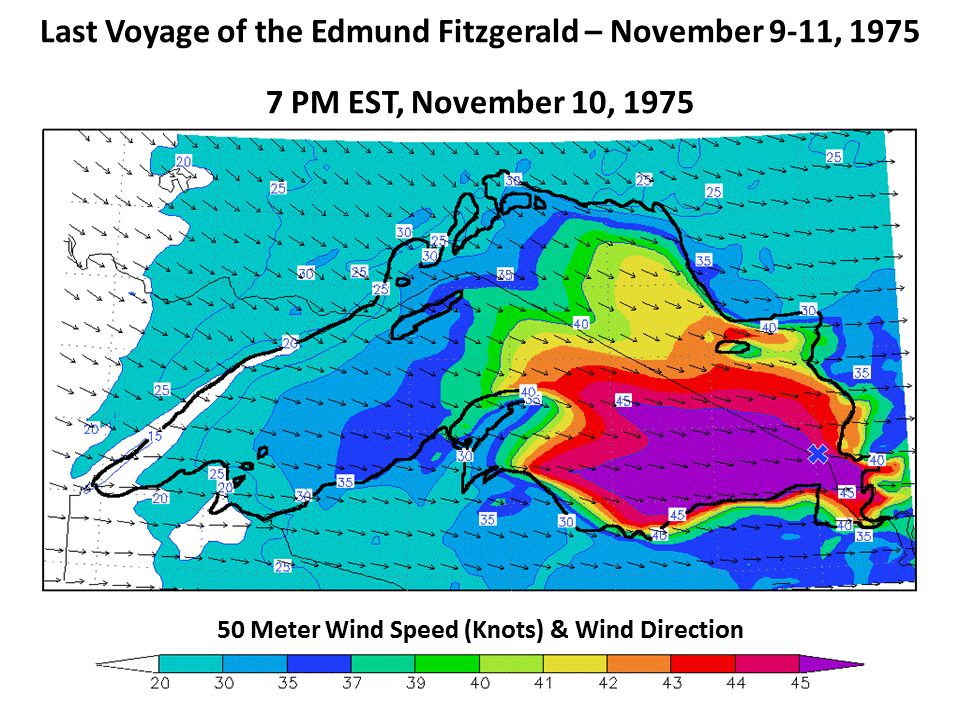
Wave heights of around 7.5 meters (24 feet) were also probably in the vicinity of where the Edmund Fitzgerald would have been at the time it sank, as indicated by the red + in the image below.
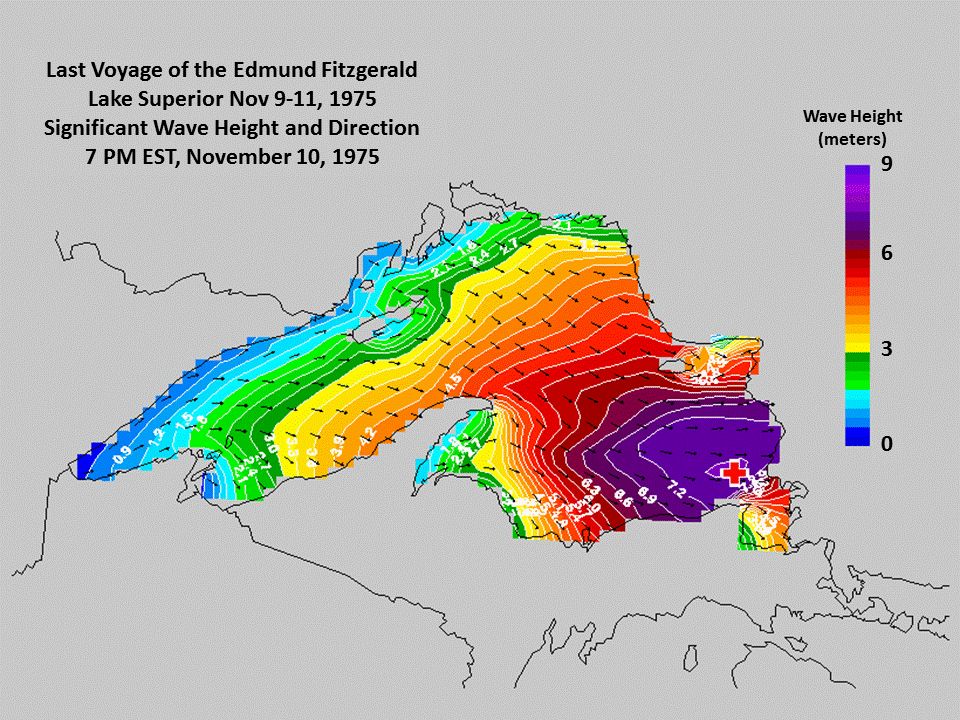
Although there is no official cause for the shipwreck, the weather may have at least been a contributing factor.
Because of its heavy load, the Edmund Fitzgerald sat very low on the surface of the water, so it would not take much to flood the deck.
The final report from the Coast Guard suggested that the ship nose dived into a large wave from which it could not recover, sending the ship to the bottom of Lake Superior in seconds.
The remains of the ship still lie at the bottom of Lake Superior, and to this day, it is the largest ship to have sunk in the Great Lakes.
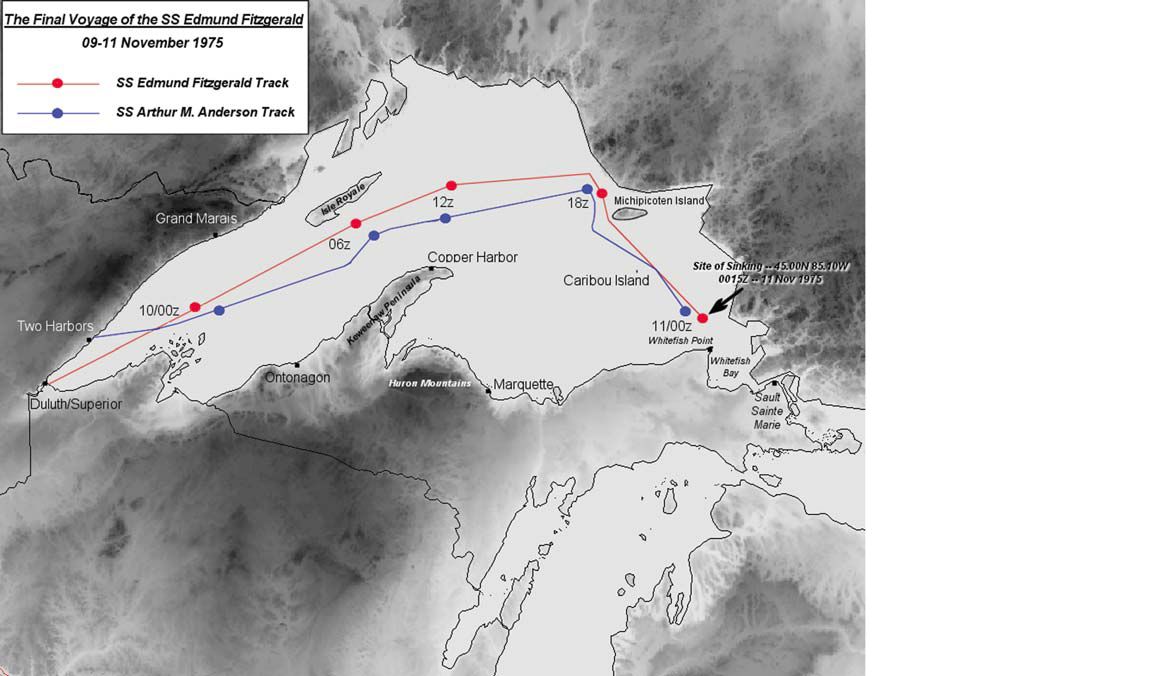
Our team of meteorologists dives deep into the science of weather and breaks down timely weather data and information. To view more weather and climate stories, check out our weather blogs section.



